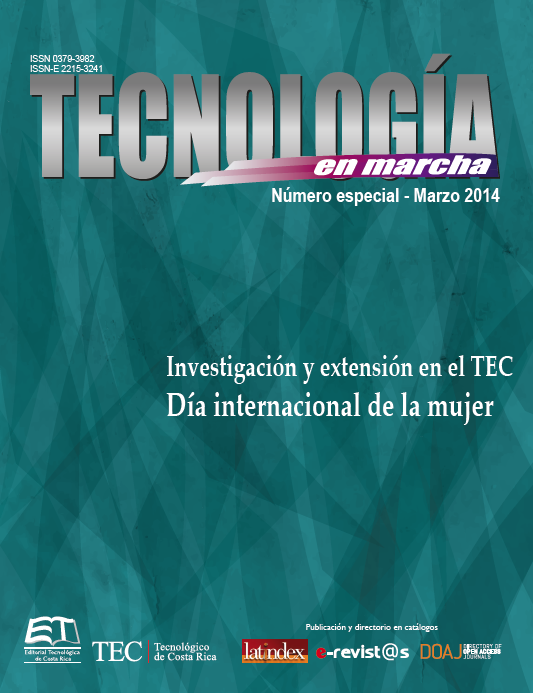Procedure definition to obtain a fermented drink from the coffee pulp
Main Article Content
Abstract
Weather and soil conditions of Costa Rica give to the country the possibility of having an economy based in agricultural activities. Coffee had been for centuries the most important crop for economic and social development in Costa Rica.
However, international agreements avoid coffee producers to give an attractive added value to the grain. They have to export the product as a dried grain. They get prices that depend of weather conditions in other countries that produce coffee.
Furthermore the coffee activity produces a big quantity of agricultural residues. It is estimated that every year, around 400 000 tons of pulp (broza) are produced. This material have a high moisture and a high sugar content (85 and 15%), characteristics which gives it a very perishable nature. Obviously, this material is difficult to manipulate, and producers have to expend a lot of money to avoid contamination problems.
Motivated by this situation, the INSTITUO NACIONAL DE FOMENTO COOPERATIVO (INFOCOOP) asked the INSTITUTO TECNOLÓGICO DE COSTA RICA (ITCR) about the possibility to propose a research project to develop new products from the coffee remains.
This article presents a way to develop a fermented drink from the coffee pulp. Each process step is analyzed in order to choose the best mechanism and the best equipment.
The project had been developed by three big steps; an artisanal one, using plastic bins, a pilot step using a NEW BRUNSWICK bioreactor of 3 liters capacity and a third one; the scaling step developed at the Centro Nacional de Innovaciones Biotecnológicas (CENIBIOT). In this last step, APPLIKON bioreactors had been used. The levels production were 15, 50 and 100 liters which were developed by triplicate.
The final chart process is represented in figure 4. A fermented drinking from coffee pulp had been obtained, with a high degree of acceptability. Sensory analysis of the fermented drinking had been applied by the Centro Nacional de Investigación en Tecnología de Alimentos. (CITA). The same research center applied the analysis to compare the acceptability of the final product using different yeast strains: Bayanus, Davis 522, Levuline, Vitilevure and the “bread making strain”. No significant difference in product acceptance had been found. Then; the “bread making strain” had been used in the scaling step.
Article Details
Los autores conservan los derechos de autor y ceden a la revista el derecho de la primera publicación y pueda editarlo, reproducirlo, distribuirlo, exhibirlo y comunicarlo en el país y en el extranjero mediante medios impresos y electrónicos. Asimismo, asumen el compromiso sobre cualquier litigio o reclamación relacionada con derechos de propiedad intelectual, exonerando de responsabilidad a la Editorial Tecnológica de Costa Rica. Además, se establece que los autores pueden realizar otros acuerdos contractuales independientes y adicionales para la distribución no exclusiva de la versión del artículo publicado en esta revista (p. ej., incluirlo en un repositorio institucional o publicarlo en un libro) siempre que indiquen claramente que el trabajo se publicó por primera vez en esta revista.

